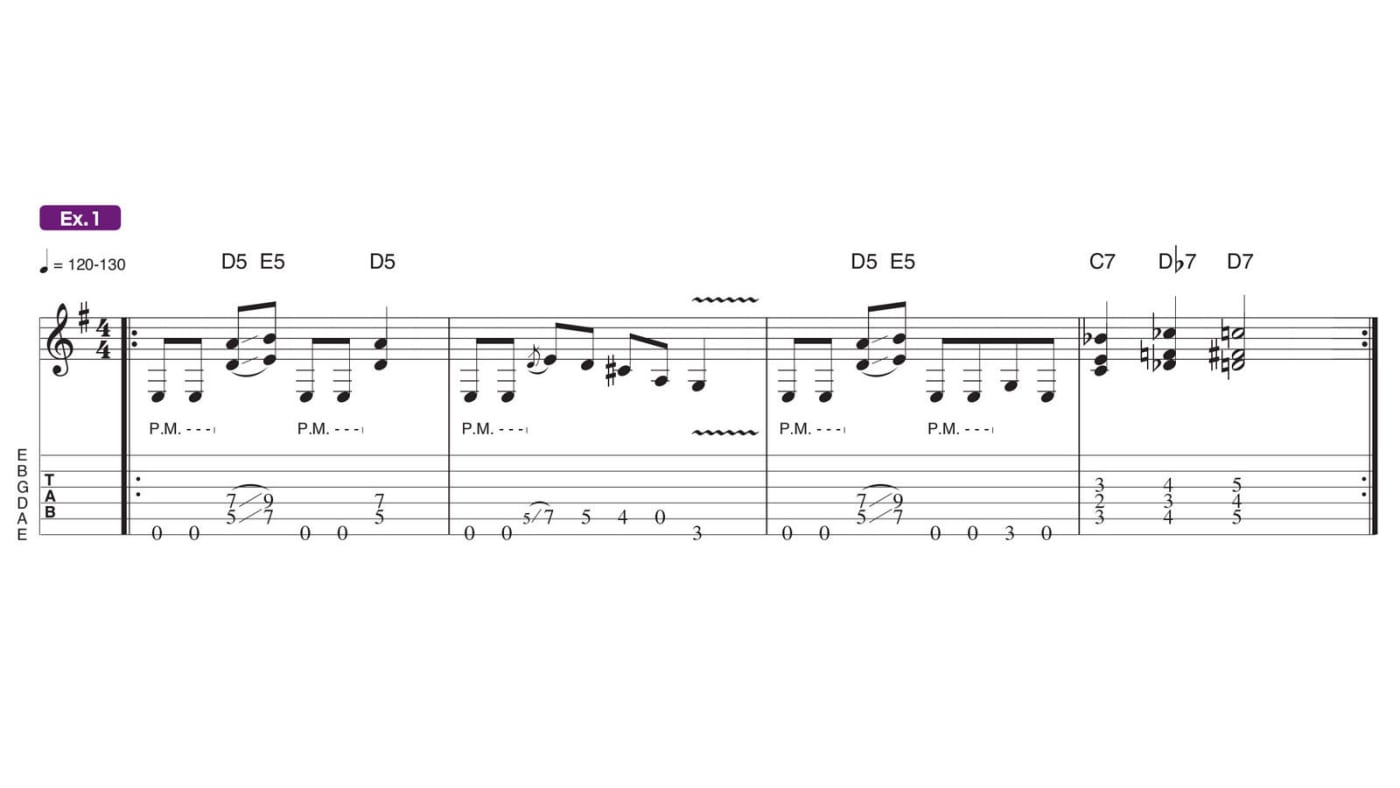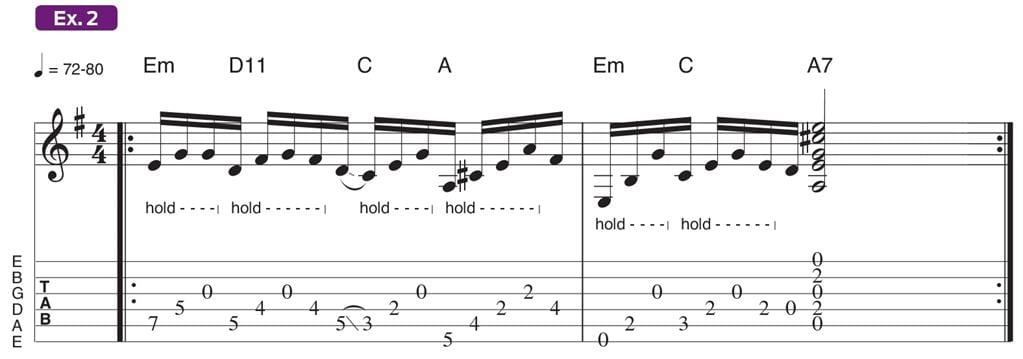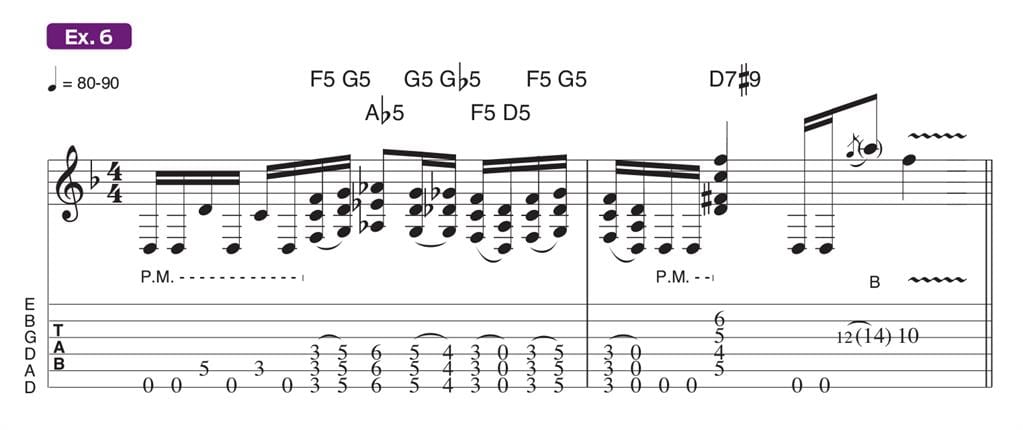Exploring Ty Tabor's Guitar Magic
Although he remains something of an unsung hero outside of rock circles, Tabor’s sonic innovations have become permanent parts of the heavy guitar lexicon.

As the pop metal excesses of the ’80s gave way to the dark, brooding grunge of the ’90s, rock guitar found itself at a perplexing crossroads. Credit King’s X’s Ty Tabor for helping forge a path forward. By melding metal’s musical lineage with his own drop-tuned inventions, the soft-spoken Mississippian helped coin the musical language of the future. On 1989’s Gretchen Goes to Nebraska, and 1990’s Faith Hope Love, Tabor fearlessly blended Hendrix-infused cosmic blues, folky arpeggios, far-Eastern melodicism, and unrelenting dropped-D riffage. Although he remains something of an unsung hero outside of rock circles, Tabor’s sonic innovations have become permanent parts of the heavy guitar lexicon.
King’s X’s reworking of the old spiritual “Over My Head” (from Gretchen Goes to Nebraska) is one of the band’s most enduring songs. Ex. 1 explores some of the elements of Tabor’s catchy arrangement by combining Sabbathesque power chords, Dorian mode melody, and a Thelonious Monk-ish chromatic dominant chord climb.

Based on another Gretchen favorite, “Summerland,” Ex. 2 again delves into Tabor’s penchant for exploring Dorian territory, this time via a series of creatively voiced rolling arpeggios linked by an open G-string drone. Be sure to hold each chord shape for the duration of the arpeggio and barre your first finger across the 2nd fret to grab the A chord at the end of the first measure.

For the remaining examples, you’ll need to retune your sixth string to D. Although this tuning and its variations (dropped-Db, dropped- C, and dropped-B) are fairly ubiquitous in current heavy metal, Tabor’s institution of it was nothing short of revolutionary at the time. It facilitated the exploration of melodic phrases against the D-A-D root-fifth-octave drone of the low strings and also allowed for barred single-fingered power chords to be played with the speed and intricacy of single notes. Much like Tabor’s main riff from Gretchen Goes to Nebraska’s leadoff track “Out of the Silent Planet,” Ex. 3 melds dreamy drones, dissonant dominant harmonies, and slack-stringed power-chord brutality. Another example of this approach that recalls Faith Hope Love’s “It’s Love” is Ex.4, which delineates a single-note third-string melody against open fourth, fifth, and sixth strings before resolving in power-chord stabs.


For much of his lead playing, Tabor relied on blues and pentatonic scales heavily laden with jazzy chromaticism and lyrical bends. Ex. 5 offers up a taste of the magic conjured on “Moanjam,” the extended tour de force solo break from Faith Hope Love.

Our final example, Ex. 6, draws its inspiration from Faith Hope Love’s funk-metal masterpiece “We Were Born to Be Loved.” Although the D7#9 chord and tasty blues bend at the end suggest Band of Gypsys-era Hendrix, the chromatic flurry of sixteenth-note power chords is pure Tabor. Major elements of Tabor’s style would be adapted and become standard-issue armament for guitarists of the ’90s and beyond, but when these two seminal albums first surfaced, it genuinely seemed as if some advanced silent planet had sent a guitar-wielding alien spaceman to earth!

Get The Pick Newsletter
All the latest guitar news, interviews, lessons, reviews, deals and more, direct to your inbox!
“Write for five minutes a day. I mean, who can’t manage that?” Mike Stern's top five guitar tips include one simple fix to help you develop your personal guitar style
"It’s like you’re making a statement. And you never know where it’ll lead." Pete Thorn shares the tip that convinced Joe Satriani he was the right guitarist for the SatchVai Band










